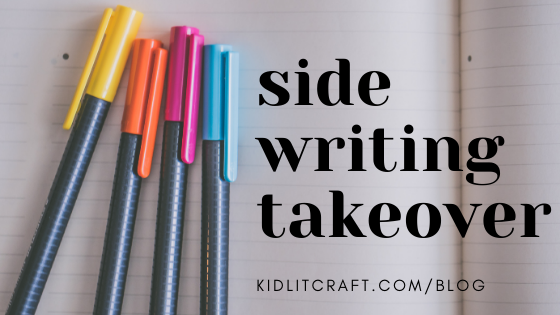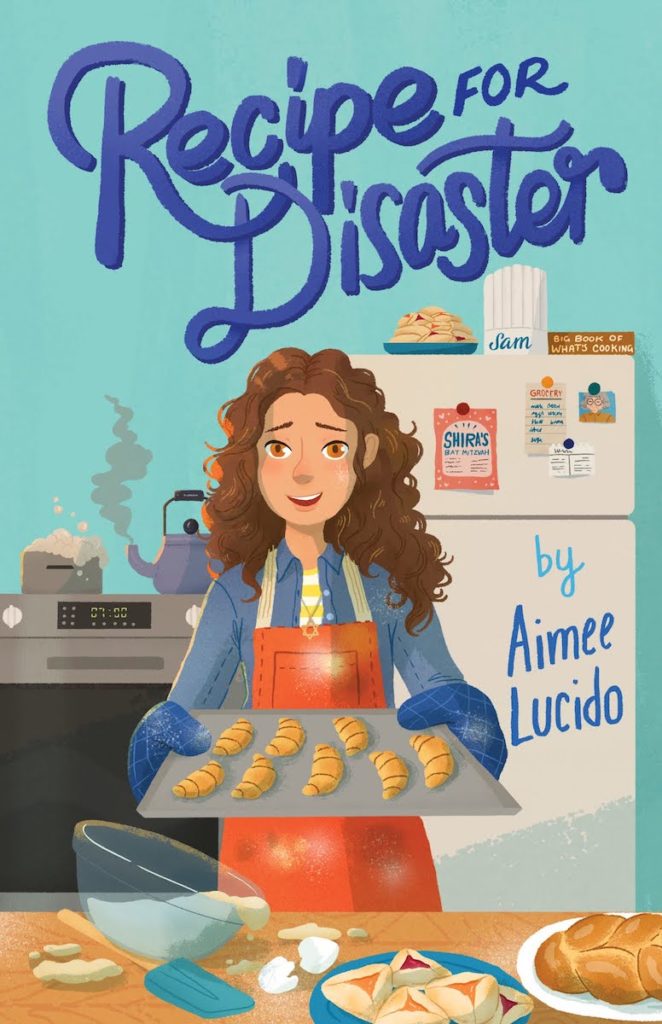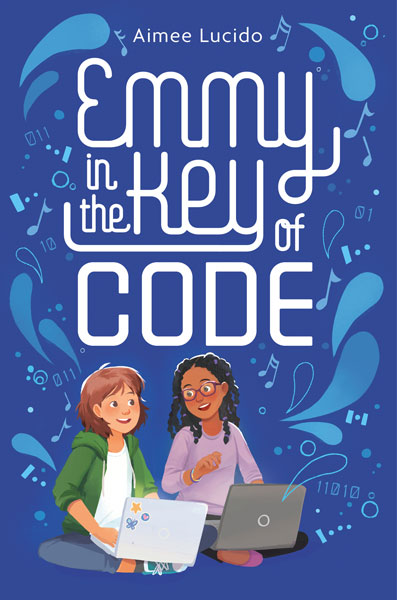interview by Anne-Marie Strohman
Sidewriting Takeover brings together writers of picture books, middle grade, and young adult to explore how writing outside of a draft can help deepen your drafts and revisions. Each writer shares an exercise that they’ve found helpful. If you missed our initial post: START HERE.
I first met Aimee at an in-person meeting of Middle Grade Lunch Break (the group that spawned this blog). I was impressed by her wide knowledge of writing craft and her careful attention to detail in reading. And then I fell in love with Emmy, the title character of her middle grade novel-in-verse Emmy in the Key of Code. Her next novel Recipe for Disaster is coming out in September, and I can’t wait! In the meantime, Aimee shares with us her non-sidewriting ways and what she does instead. –Anne-Marie
KidLit Craft: When have you done sidewriting in your writing practice?
Aimee Lucido: I’ve mostly only done sidewriting when assigned by my teachers, but every so often I do little bits as part of a twitter game, or because a friend asks me.
KLC: Why do you think that is?
AL: I’ve always found it fun to do small bits of sidewriting because it feels like a novelty. Like, when someone asks you what your character would be for Halloween, or what sorts of TV shows they watch, it’s fun to think about that sort of thing (Emmy would be a robot, and her favorite show is Jeopardy, Hannah [from Recipe for Disaster would be a hamentaschen, and she mostly watches TV to turn her brain off, so she’d watch House Hunters or Queer Eye, or something like that).
But I’ve never really gotten into doing sidewriting as a way into the story, and I’m not entirely sure why that is! I think there’s some aspect, though, of my characters very much existing within the context of the story, to me. I choose the stories I write because there is something enticing about the situation, some internal question I’m trying to answer, and the situation created by that question may be fairly extreme. So what’s interesting to me is how these characters are reacting to this specific, extreme situation, and oftentimes that means I have trouble picturing them in a more ordinary context.
KLC: Are there ways you think about your character/story outside of the words on the page that you may not specifically write down? (In other words, do you do side-thinking? or side-talking with other writer friends?)
AL: I do a *lot* of side-thinking. I have been having issues with insomnia lately, where I wake up in the middle of the night and toss and turn for a few hours before falling back asleep, and usually what I do in those hours is think about my characters. Oftentimes my characters will be doing something in the story, but I won’t know why, and these hours are the times where I meditate on why my characters are doing what they’re doing. I suppose this still lies within the confines of the story itself, but it helps me visualize my characters as fully-fledged people.
I also do a fair bit of side-talking with author friends. Most recently, a friend who read a draft of a new(ish) project of mine asked me what the main four characters’ enneagrams were. I was able to figure out where they fall pretty easily, which was nice because it showed that these four characters really are very different from each other, which is probably why they react to the story’s key situation in starkly different ways.
KLC: How was that experience helpful?
AL: The experience was helpful because it gave me a way of formalizing the behaviors of my characters. For example, the mom in my story is a type six. She’s committed, security-oriented, anxious, and in times of stress she goes to a three, which is image-conscious, driven, and focused on excelling. This was something that was already in my book, but it highlighted it in a way that I hadn’t noticed before. And I think it’s given me license to play up those behaviors a bit in revision.
Sidewriting Challenge: Personality Test
For your main characters, or main character and important secondary characters, give them a personality test! Choose any that you’re familiar with: Enneagram, Myers-Briggs, Gretchen Rubin’s Four Temperaments, or the VIA Character Strengths survey (there’s a teen-specific option on this one), for instance.
Spend some time writing: How do the qualities highlighted in the survey already show up in your story? How might you include them in revision?

Aimee Lucido is a software engineer and the author of EMMY IN THE KEY OF CODE and the forthcoming RECIPE FOR DISASTER. She got her MFA in writing for children and young adults at Hamline University and lives with her husband and dog in Berkeley, CA where she likes to bake, run, and write crossword puzzles. www.aimeelucido.com Twitter: @AimeeLucido Instagram: @AimeeLucido
For more of our sidewriting series, check out these posts:
Interviewing Your Character with Karen Krossing
Time-Traveling with Jennifer Ziegler
To sign up for our monthly newsletter, click here:
Anne-Marie Strohman (co-editor) writes picture books, middle grade novels, and young adult short stories and novels. She is trained as a teacher, an editor, and a scholar, specializing in Renaissance Literature. She holds an MFA in Writing for Children and Young Adults from Vermont College of Fine Arts and is an active member of SCBWI. Find her at amstrohman.com and on Twitter @amstrwriter.




COMMENTs:
0